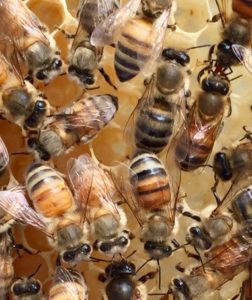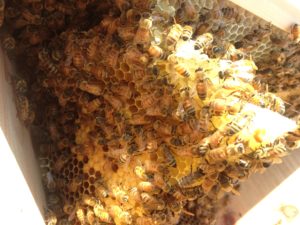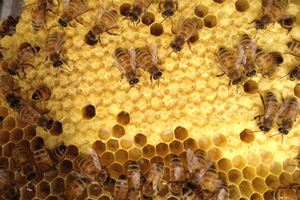- All-In-One Beekeeping for the Bees
- +1-608-728-8233
- info@beepods.com
What Has Climate Change Done To Bees?
 Climate change has been a big topic of conversation around the world lately and for a good reason. We know that climate change is becoming an increasing problem and it has disastrous effects on the planet. For starters, we see wildfires, rising sea levels, deadly heat waves, and other natural disasters, but do you ever think about how all of these disasters affect bees? One of the biggest causes of harm to bees regarding climate change is a rise in temperature and precipitation.
Climate change has been a big topic of conversation around the world lately and for a good reason. We know that climate change is becoming an increasing problem and it has disastrous effects on the planet. For starters, we see wildfires, rising sea levels, deadly heat waves, and other natural disasters, but do you ever think about how all of these disasters affect bees? One of the biggest causes of harm to bees regarding climate change is a rise in temperature and precipitation.
Global temperatures are constantly rising and as most know, bees and plants are in tune with common weather patterns such as snow melting, or rain occurring so that is not the issue. We ask ourselves then, what is the issue?
- When seasons shift from existing patterns, it causes bees to emerge after plants are ready to be pollinated
- Temperatures rise so high that gut parasites arrive and leach onto bees which can cause an entire colony to be destroyed.
- The amount of rainfall being produced makes it difficult for bees to collect food.
These are just a few examples of how climate change is affecting these fuzzy creatures. The biggest issue researchers are finding are related to increased precipitation and rising temperatures. They are starting to witness large colonies die off because they are unable to migrate to cooler climates. The New York Times stated, “researchers found that bumblebee populations had recently declined by 46% in North America.” We are seeing this all over Europe as well, so it is apparent that this number is increasing as the years go on. This poses a real threat to the mass extinction of bees in the future.
The scale of this decline is very worrisome because we know how much bees play a part in our ecosystem. With this steady decline of bees, we are looking at fewer pollinators, which in turn would throw off the production of food for all animals and birds that are dependent on food, berries and seeds. The production of food crops will start to wither too. Bees are responsible for pollinating 35% of agricultural production and almost 90 different commercially grown food crops in the U.S. alone. This agricultural production is made up of nutrition based crops, honey bees and other native pollinators are responsible for 90% of the variety of fruits, vegetables and other nutritious foods that we eat every single day.
Simply put, if bees die off, most life will go with them. It is disheartening to see how much the bees that affect everyday life are being wiped out by climate change. So, after all this devastating news, you are probably wondering, how can you help? Here at Beepods, we embrace a proactive approach by incorporating micro-actions into our everyday life. Micro-actions are things people believe will not make a difference because they are small when in reality they could make a significant impact if every person contributed, such as recycling, taking shorter showers, or composting. There is so much you can do to reduce your carbon footprint, fight climate change and save the bees.

We have always been big advocates of saving the bees (obviously) and fighting climate change. A way to impact both is by practicing sustainable beekeeping. Check out more here on how we succeed in beekeeping while focusing on saving the bees rather than the honey production.
Linked below are some useful articles on how bees are affected by climate change and articles on how you can help save the bees.
- About: Climate change reduces abundance of bees and they are more affected by climate change than disturbances to their habitat.
- About: Extreme weather and heat waves affect the population of bees. Shows graphics.
- About: Includes facts about bees, ways to save bees, and threats to bees. Informative.
- About: Includes ways to save bees by pointing out what harms them.
Elizabeth Allon
Latest posts by Elizabeth Allon (see all)
- Short But Mighty: The Stages of Life - January 26, 2022
- Honey Bees Vs. Highways - January 19, 2022
- 4 Ways to Save The Bees in 2022 - January 12, 2022



